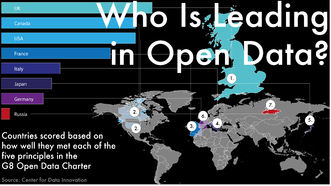In this 4-part series, David Robinson describes the journey that he and his team are taking within India to more fully understand the needs of the communities they are innovating for.
We all know what it takes to validate a medical product—to test it with your customers and ensure it can be reliably deployed into the resource settings in which it will be used.
In our case we’re working to develop a new class of Point of Care (POC) sensors for the screening and, ultimately, for the diagnosis of Tuberculosis (TB). TB is a terrible disease affecting significant populations throughout the developing world. While TB can be easily treated, too many who are infected never get the treatment they need—and obtaining a diagnosis often means travel and time away from work and family.
Our POC offering faces some particularly daunting challenges because we want to deploy it in rural and urban communities which are underserved and have a severe shortage of resources. We’ll be relying on health care workers called ASHA workers who are generally less skilled and may have very limited support.
If that isn’t complicated enough, we also plan to connect the POC offering to a data backbone so we can map our screening results in near real time. This will allow us to chart patient compliance with treatment, identify others who could potentially be infected, and correlate other potentially relevant information.
It’s a big challenge, but our hope is that we can provide a useful tool to help public health professionals to chart the course of an infectious disease like TB at a granular community level, better understand the dynamics of TB, and connect with patients and their loved ones or coworkers who may also be infected.
To more fully understand the challenges we can expect in the field, we’re visiting some of the communities in India where we’ll be conducting clinical testing—so we can visit with the community, educational institutions, health clinics and public health professionals who we will need as partners.
We’re not here to sell anything—but rather to understand the dynamics of deploying our products successfully. This was our first day.
India: Day One
India is amazing, but finding a person or a home in the “villages” within a city like Mumbai is a daunting task.
We visited Asha and her family in a community within Pune. She, her husband and their five children live in a 2-room house in a community of almost 5,000—squeezed into a few tiny blocks. The home is almost middle class in this neighborhood—with two sparce rooms for seven people. It is small but clean. The children, relatives, and neighbors cram into the doorway to watch and listen to these strangers who have invaded their neighborhood.
We’re here to assess the viability of screening for tuberculosis at a community level, in the homes of individuals. These first meetings will determine how we approach the project, map incidence, and help health care workers to find the home to check on compliance or to ensure others are screened as well.
Asha is unusual for a lot of reasons. She is not afraid of strangers like us and she speaks English fairly well. Her willingness to provide an entry into her world was just the ticket to get everyone in her community to open up to us.
The children are curious and full of wonder over the fact that we’re there. As we walk around meeting the entire family, we seem to collect dozens of boys and girls, all of whom want to be as close to us as possible.
Living here is difficult, Asha tells us. They depend on government subsidies for rice and vegetables, and on good luck in finding work. Her job turns over at least once or twice every few years when the German or American family that has been temporarily assigned to Pune returns home. It can take weeks or months to find new work, and during that time they depend on others in her “village” to help make sure her family has enough to eat.
As we probe toward the questions we really need answered, we discover the treasures about a life so different from our own.
These communities are really quite open, at least today. Maybe it’s Asha, or maybe it's that we’re not actually asking anyone to use our POC test, but it seems to us that we could access individuals to request participation.
As Asha takes us from her home to see her mother and brothers' families, we begin to realize that once we get one person to open up—the rest seem willing to take us into their homes as well and to share their stories.
And their stories are very much like our own.
They are obviously proud of their children. With four daughters and a son, she considers her family complete. Her youngest, a boy of about three hides behind his father’s legs, peering out only long enough to grab a blue marble that is offered to him. The girls can’t wait to engage, as if we’re some form of wondrous entertainment.
It’s obvious to us that Asha and her husband have been married long enough to have gone through the tough times of having children in an area so poor. He let’s her lead the conversation, but hovers nearby, protective and supportive at the same time.
It’s the beginning of a long process of getting to know India, but it is already clear what we will learn by being here: that we all have so much in common— our children, our community and our love for one another. It’s a beautiful reminder that those who do not have much in material possessions can still have riches in abundance.
Stay tuned for the next installment in this 4-part series as we continue our research journey within India.
The nuviun industry network is intended to contribute to discussion and stimulate debate on important issues in global digital health. The views are solely those of the author.
Log in or register for FREE for full access to ALL site features
As a member of the nuviun community, you can benefit from:
- 24/7 unlimited access to the content library
- Full access to the company and people directories
- Unlimited discussion and commenting privileges
- Your own searchable professional profile







.jpg)
